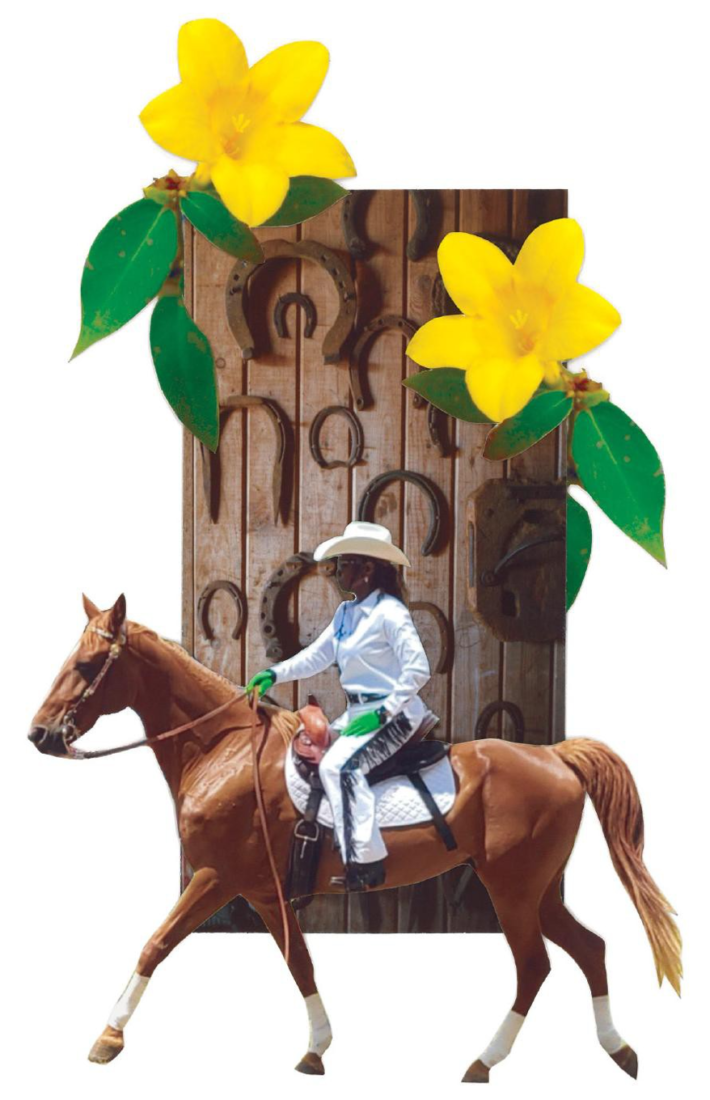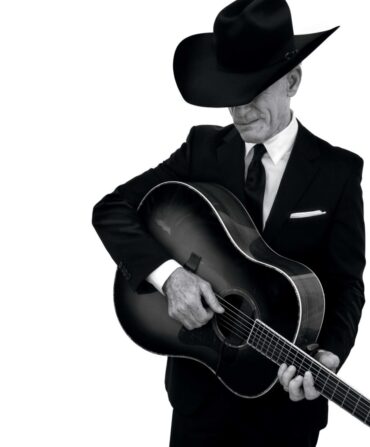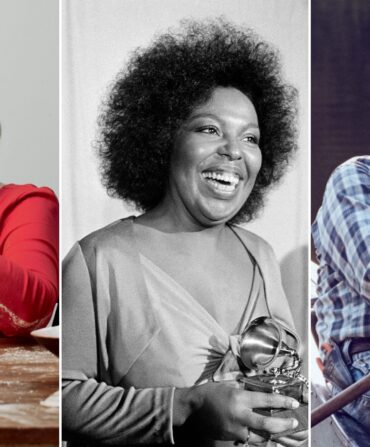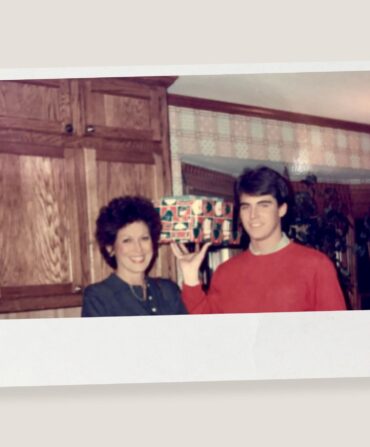Some cowboys come in Hummers instead of on horseback now, but the impetus behind the Black Cowboy Festival remains the same: to honor the Black Western pioneers underrepresented in history and popular culture. For this annual weekend of horsemanship exhibitions and amateur competitions, thousands of people from hours away come to tiny Rembert, South Carolina, less than an hour east of Columbia.
I learned about the festival the way most folks do, by word of mouth. In 2016, I was covering the Chitlin’ Strut in Salley, South Carolina, and I shared a plate of the event’s namesake with a man who told me about the celebration, full of country pride and riding contests. He promised the food was always good, and the music even better.
I shouldn’t have been surprised that my home state, though far from the Wild West, would have a cowboy culture. Historians estimate that in the years following the Civil War, a quarter of cowboys, and 30 percent of homesteaders, were Black. Most of those folks were from the South. They spread up and away from the region that had held them in bondage, driving wagons or walking through prairies in search of something better. They haven’t so much been erased from the history of westward expansion as never included in the first place. Events like the Black Cowboy Festival aim to change that.
On the last weekend of May (instead of the typical first weekend, a pandemic-era change), I wind my way through cornfields to Rembert and Greenfield Farms, the sixty-acre property where owners Mark and Sandra Myers hold the event. The car in front of me is from Arkansas. The one behind, Virginia. As we wait to pass through the property gate, only one sign refers to what we all came here to see: a small plywood square that partly reads, BLACK COWBOY, MAN OR MYTH.
The Myerses didn’t initially set out to answer that question. Sandra’s great-great-grandparents lived on the land underneath Greenfield Farms when they were enslaved, and Sandra’s father grew up there. In 1991, the Myerses purchased the tract, and in 1997 held a church fundraiser there at which children could learn more about farm animals. As crowds grew year after year, so did the festival, and it soon became a tribute to the grit and determination of the Black cowboy. As I wander the grounds, I spot Mark speaking to a cameraman. “It’s about people coming together, no matter what color,” Mark says. He hopes the festival, he adds, “will create a greater interest in equestrians, cowboys, and horsemanship in South Carolina, for the everyday working people.”
A lot of those people, myself included, didn’t grow up imagining Black cowboys. As I sit in my camp chair at the edge of the event ring, I realize this is the first time that I, at thirty-five, have witnessed someone who looks like me partaking in the daring activities of steer wrestling, calf roping, and barrel racing that I had seen on television during my formative years.
My father loved Westerns. When his family bought a TV in the 1960s, they were all he watched—Maverick, Wagon Train, Gunsmoke, The Virginian, Rawhide, The Rifleman. Later, on the occasional rainy day he wasn’t at the farm or the produce stand, How the West Was Won or The Magnificent Seven would play while he puttered around his garage workshop. To him there was nothing more American than the cowboys and their adventures and, perhaps ironically, watching them became his attempt to escape society’s oppressive reality.
As for me, I gravitated to Dr. Quinn, Medicine Woman, a semihistorical family drama set in Colorado Springs that premiered on CBS in 1993. The series included Jonelle Allen as Grace, the first major Black supporting actress in a prime-time Western. She was married to a blacksmith named Robert E., played by Henry G. Sanders, and sometimes the story line would hint at the barriers the couple faced as they tried to make a life for themselves as recently emancipated people. But they were given no last names. They were always supporting characters, never the heroes.
Still, the show was the closest any of us, old or young, had come to seeing Black people as part of the Western record. A void by design. Enslaved people were mostly forbidden from learning to read and write, and textbooks excluded their stories. Some were made out to simply be legends. (Historians now believe the exploits of Bass Reeves, a formerly enslaved man from Arkansas who became the first Black deputy U.S. marshal west of the Mississippi River, inspired the Lone Ranger tales.) And sundown towns, Jim Crow laws, and segregationist policies kept many from competing in rodeos. When they did compete, they often weren’t scored. If they won the competition, sometimes they were deprived of the cash prize.
Once, locals ran the bull rider Willie Thomas out of town when they found out his race. “The high sheriff escorted me to the Texas line,” Thomas, known as the Jackie Robinson of rodeo, once recalled in an interview, “and he told me, don’t come back or the Ku Klux Klan would kill me.” This isn’t ancient history: Thomas died in 2020, and the Bull Riding Hall of Fame only inducted him last year.
Back at the festival, “Buffalo Soldier” by Bob Marley and the Wailers begins to play, and several men in cavalry gear gallop around the ring before lining up in formation. I have, at least, heard of the Buffalo Soldiers, a segregated regiment of Black cavalry and infantry fighters formed in 1866, from history books. To prove themselves worthy of being part of the military—and by extension, citizens—they became complicit in the vilification and genocide of Indigenous people residing on land the government wanted to colonize. Marley’s song links their behavior to the universal fight for survival, recasting the soldiers as a symbol of Black resistance.
Then George Strait’s “How ’bout Them Cowgirls” blasts, and five flag-carrying women on horses take the soldiers’ places. Cowgirls! Preteen, Dr. Quinn–loving Latria would’ve been thrilled. Images of Black cowgirls are virtually nonexistent in pop culture. To boot, the actions that defined the adventurous West—gambling, drinking, shooting, horse riding—were considered off-limits to the women in my family. When the festival’s competition portion ends, I wander to the field where the cowgirls tend to their horses, watching them as they mount up to pose for pictures proudly astride their steeds.
Occasionally, the DJ cuts the music and the announcer shares facts, met with claps and cheers, about a Black pioneer: Nat Love; Bass Reeves; Mary Fields; William “Bill” Pickett, the first Black honoree in the National Rodeo Hall of Fame. But modern trailblazers feature here too, including young Breauna Ousley. In August 2017, the announcer proclaims, Ousley became the first Black English rider on the University of Alabama’s team. The crowd whoops as Ousley trots around the ring on a quarter horse named Asher. We sit rapt, marveling at her expert command of the rhythmic motions of her horse and learning more about an equestrian sport some of us have never seen.
Between competition runs and riding exhibitions like Ousley’s, the atmosphere lies somewhere between an HBCU college tailgate and a family reunion. The sun is sizzling, but the folks around me practically bask in it: Wearing their Stetsons and Ray-Bans, they scramble to find an open space when the DJ plays “The Git Up” by Blanco Brown for a group line dance. The joy writes another kind of new history. “Please remember to stay hydrated,” the event announcer warns with a laugh. “I wanna talk to you, not about you.”
Later, some of the cowboys begin to give horseback rides to toddlers. The kids’ shrieks of joy carry across the field, where adults wait for the bull-riding competition to begin. The toddlers look up at the cowboys, and the cowboys—with melanin-rich faces and curly black hair—smile back at them.








